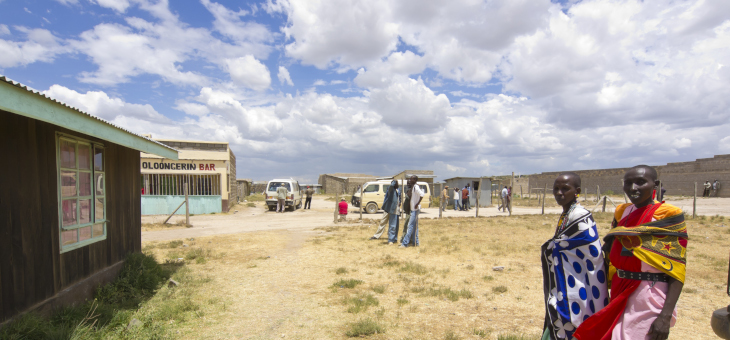Kenya’s economy is recovering this year after only a short recession last year but downside risks loom

Kenya’s economy in recovery in 2021 after only a short recession last year
The business cycle in Kenya was less affected by the Covid-19 pandemic compared to other economies. The country is expected to experience real GDP growth of 5.6% in 2021, after only a small economic contraction of -0.3% in 2020. That being said, downside risks loom. For example, global supply chain disruptions could slow down the economic recovery in the next few months. Furthermore, the country will remain vulnerable to Covid-19 waves despite its rapid vaccination rate compared to other Sub-Saharan countries. The Kenyan population is expected to reach herd immunity by the end of 2022. That being said, more contagious variants of Covid-19 could mean that a greater proportion of the population needs to be vaccinated, moving the expected date to reach herd immunity well into 2023. As long as Covid-19 waves could gain momentum, economic activity could be impacted. Furthermore, Kenya has so far decided not to tighten its monetary policy, despite inflation being higher (6.5% in October 2021) than the target (5%). However, a monetary tightening of the central bank of Kenya in the future could lead to even higher lending rates (which are already at an elevated level) and could pressurise bank lending to the private sector and thus hamper economic growth.
Current account balance still in deficit
Like many other countries in the world, Kenya experienced an import compression in 2020 due to the Covid-19 pandemic and lockdown measures, while commodity prices (e.g. oil) were also relatively low. However, the current account deficit remained rather elevated for Kenya (-4% of GDP in 2020) as export revenues also decreased. The Covid-19 pandemic has halved tourism revenues (accounting for 6% of current account revenues in 2019) compared to pre-pandemic levels while agriculture exports (15% of current account revenues in 2020) are vulnerable to weather shocks. In 2021, the current account deficit is expected to widen again to 5% of GDP. The main reasons are the import of capital goods needed for the execution of infrastructure projects, higher oil prices (Kenya is an oil importing country) and the predicted slow recovery of tourism revenues in the coming years. Looking ahead, current account revenues will remain vulnerable to droughts, locust infestations, potential terrorist attacks and the ongoing Covid-19 pandemic.

Business environment risk rating rather elevated with a stable outlook
The business environment risk rating is rather elevated for Kenya (category E/G) despite the good performance of the business cycle. The main explanation for the elevated rating is the relatively high perceived corruption indicator, the elevated lending rate to the private sector, the downward pressure on the exchange rate in the past year and rising inflation (mainly due to higher food and energy prices). Looking ahead, a monetary tightening in the USA could exacerbate downward pressure on the Kenyan shilling.
Short-term political risk rating also rather elevated with a stable outlook
Kenya’s short-term political risk rating is in category 5/7, which is also rather elevated, with a stable outlook. Although foreign exchange reserves stood at an adequate level of about 5 months of import cover in September 2021, other liquidity indicators stand at an elevated to high level. One such example is the short-term external debt level relative to current account revenues. A major downside risk is potentially rising short-term external debt in the run-up to the presidential elections in 2022. Another risk element in this context is the possible resurgence of violent unrest in the run-up to these elections, as witnessed in the past. On the upside, a continuation of the ongoing IMF programme and progress on fiscal consolidation bode well for liquidity indicators.
Kenya’s long-term political risk rating downgraded last year
After a downgrade last year, the MLT political risk rating is in category 7/7 with a stable outlook. The main issue remains that Kenya is experiencing an unsustainable high external debt level relative to current account revenues. As a result, there is a high risk of a balance-of-payment crisis (and therefore a risk of capital and current account controls being imposed, external debt default, depreciation and economic crisis).
Analyst: Jolyn Debuysscher – J.Debuysscher@credendo.com